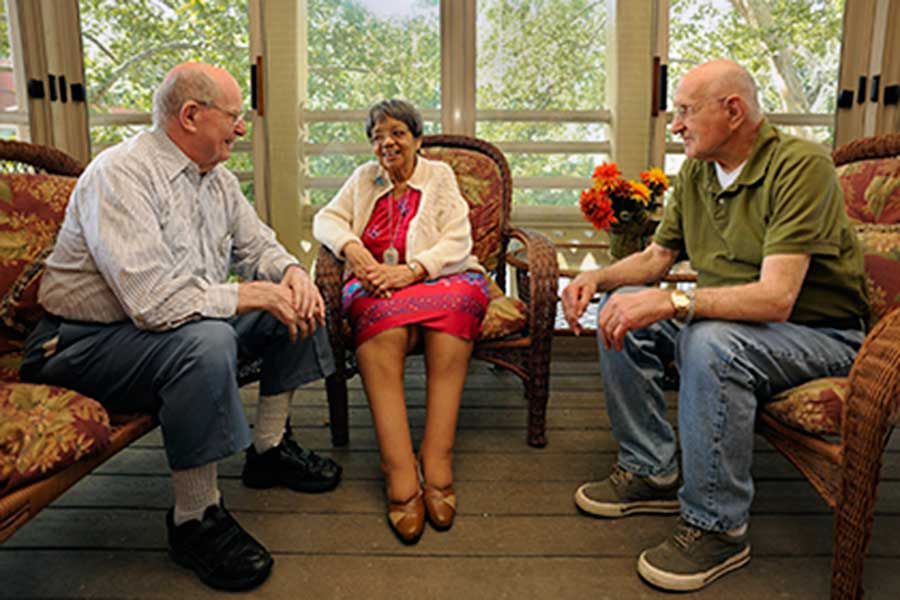If someone suggested you check out a senior center, what would you say? One response I typically hear is: “I don’t want to hang out with a bunch of old people.” In this case, I will try to convince you of the numerous social and health benefits of attending a center. However, if you are an older LGBT person, your response might be: “I don’t believe I will be treated respectfully.”
Those of us working to create LGBT-inclusive senior centers are battling misconceptions and legitimate perceptions on two fronts: the ageism in American society and a history of homophobia and transphobia in the aging system. LGBT older adults face significant disparities as a result of lifetimes of stigma and systemic homophobia. Why should we assume senior centers are different?
According to the National Council on Aging, for over 1-million older adults in the United States, 11,400 community-based senior centers serve as critical access points for a range of free or low-cost programs including meals, socialization, classes in the arts, technology, fitness and health education. Studies demonstrate positive health outcomes associated with attending senior centers. LGBT older adults should be able to take advantage of these opportunities.
For the past few years, the LGBT Elder Initiative and Center in the Park have worked collaboratively to create a more-inclusive environment at the center and to reach a more-diverse population of LGBT older adults. Founded in 1968, Center in the Park is a nationally accredited senior community center in Germantown with a rich history of combating ageism (Maggie Kuhn was influential in its founding). After a recent period of internal reflection that involved revisions to equal opportunity and organizational vision statements, as well as staff training in LGBT cultural competency, the center was ready to more intentionally create an inclusive environment for LGBT older adults.
The collaboration began with a conversation: Why aren’t we collaborating? What do we have in common? How are we different? What can we do together?
There was no logical reason not to collaborate. Both missions include building bridges and fostering community connections for older adults. However, organizational differences are what, in many ways, continue to fuel the collaboration. The center is located in the Northwest part of the city, which has one of the highest concentrations of LGBT older adults outside of Center City. Additionally, more than 90 percent of the center’s participants are African-American and 78 percent are women. In contrast, prior to collaborating, the LGBT Elder Initiative primarily held programs in Center City and attendees at many events were primarily white gay men.
In 2014, the LGBT Elder Initiative and Center in the Park co-hosted a “Healthy Aging Conversation” at the center. Staff and volunteers from both organizations were engaged in planning. The event was the first LGBTEI event outside Center City, and included a diverse audience in terms of both race and gender.
More recently, the Center invited the LGBT Elder Initiative to be a partner in the planning of the center’s annual “Balancing Dollars and $ense” event. Held this past April, the day-long housing and financial-education event was attended by almost 100 participants. The event was not marketed exclusively as an LGBT event, but was inclusive of LGBT older adults. Workshop sessions included facilitators identified by the LGBT Elder Initiative who were able to address participant concerns on topics such as end-of-life planning and housing through an LGBT lens.
Earlier this year, Center in the Park and the LGBT Elder Initiative shared our experiences with a national audience of aging-services providers, first at the American Society on Aging’s annual conference in Washington, D.C., in March, and last month at the National Institute of Senior Centers conference held in Philadelphia.
The key to successful collaborations that welcome and include LGBT older adults isn’t a complicated formula. Rather, as the poet Audre Lorde wrote, it requires that: “In our work and in our living, we must recognize that difference is a reason for celebration and growth, rather than a reason for destruction.”
Megan C. McCoy, MSS, MLSP, is the director of grant research and development at Center in the Park and is the co-chair of the LGBT Elder Initiative’s Program Committee.

